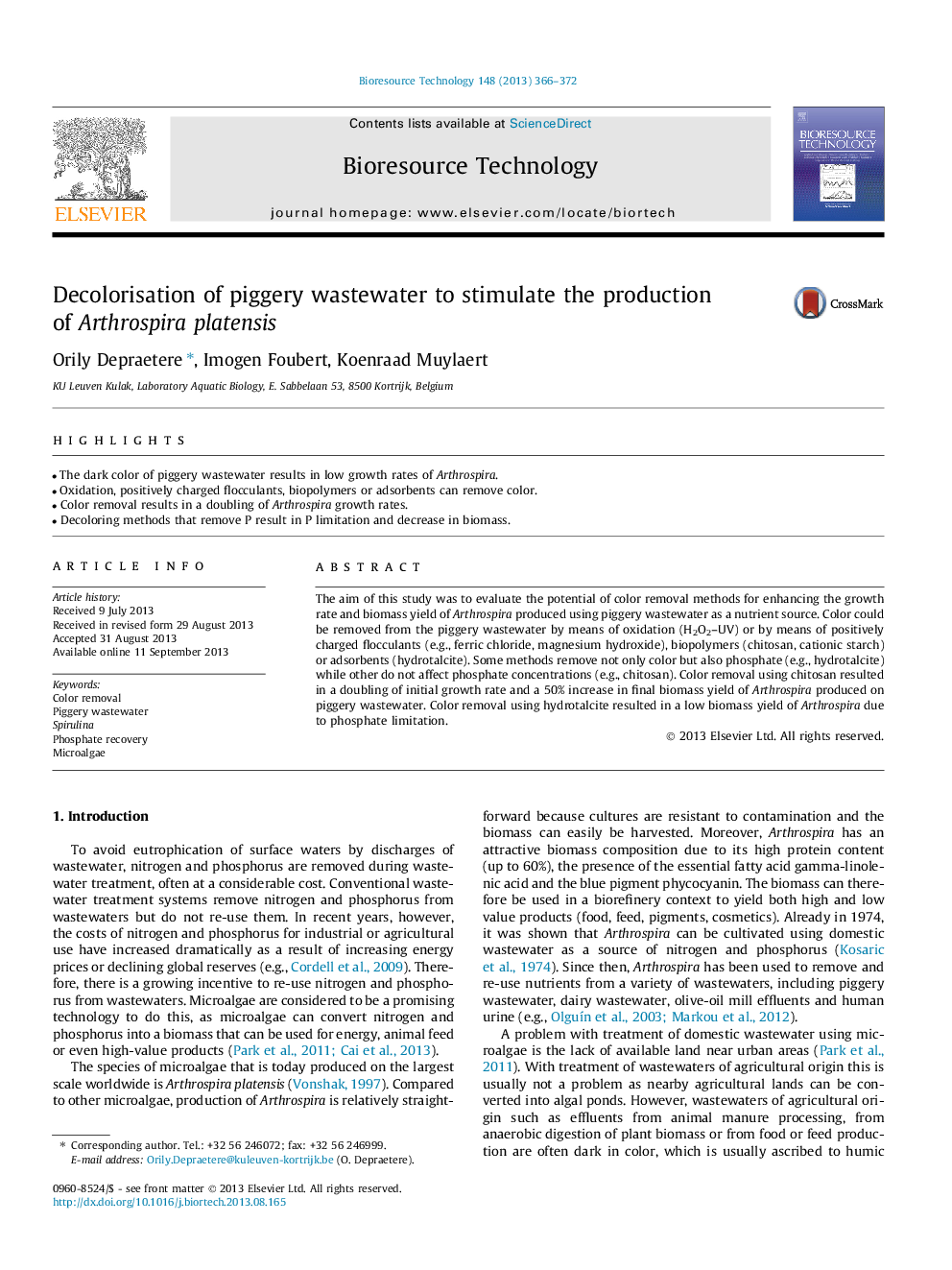| Article ID | Journal | Published Year | Pages | File Type |
|---|---|---|---|---|
| 7079943 | Bioresource Technology | 2013 | 7 Pages |
Abstract
The aim of this study was to evaluate the potential of color removal methods for enhancing the growth rate and biomass yield of Arthrospira produced using piggery wastewater as a nutrient source. Color could be removed from the piggery wastewater by means of oxidation (H2O2-UV) or by means of positively charged flocculants (e.g., ferric chloride, magnesium hydroxide), biopolymers (chitosan, cationic starch) or adsorbents (hydrotalcite). Some methods remove not only color but also phosphate (e.g., hydrotalcite) while other do not affect phosphate concentrations (e.g., chitosan). Color removal using chitosan resulted in a doubling of initial growth rate and a 50% increase in final biomass yield of Arthrospira produced on piggery wastewater. Color removal using hydrotalcite resulted in a low biomass yield of Arthrospira due to phosphate limitation.
Related Topics
Physical Sciences and Engineering
Chemical Engineering
Process Chemistry and Technology
Authors
Orily Depraetere, Imogen Foubert, Koenraad Muylaert,
